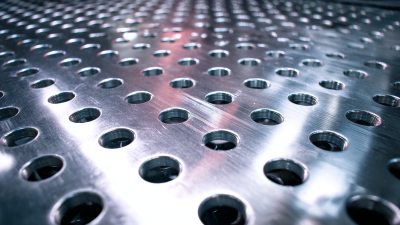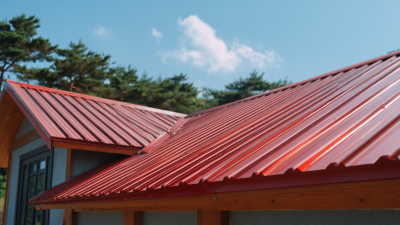Leave Your Message
-
Phone
-
E-mail
-
Whatsapp
The steel bar industry is poised for significant transformation as we approach the 2025 China Import and Export Fair, specifically the 138th session of this prestigious event. Notably, the global steel bar market is projected to reach USD 200 billion by 2025, driven by increasing demands in construction, infrastructure, and automotive sectors. According to the World Steel Association, China remains the largest consumer and producer of steel bars, accounting for over 50% of the world's production. This rising demand is fueled by government initiatives aimed at urbanization and infrastructure development, expected to propel the annual growth rate of steel bar consumption to 5.2% during the forecast period. As stakeholders gather to explore future trends, innovation in production techniques and sustainable practices will be crucial in meeting the evolving market needs, highlighting the importance of the steel bar industry in China's economic landscape.

As we look towards 2025, the steel bar industry stands on the threshold of significant innovations that promise to reshape production techniques. According to a report by the International Steel Association, advancements in automation and digitalization are expected to enhance production efficiency by up to 30%. These innovations will not only streamline processes but also reduce waste, aligning with global sustainability goals. Techniques such as real-time monitoring and predictive maintenance are set to become mainstream, allowing manufacturers to minimize downtime and optimize output quality.
In addition to automation, new material compositions are being explored to improve the performance of steel bars. Industry experts predict a shift towards high-strength, low-alloy steels, which offer superior tensile strength and corrosion resistance. A study published in the Journal of Manufacturing Science indicated that integrating these advanced materials could lead to a 20% increase in longevity for steel products used in construction. Such changes not only enhance structural performance but also contribute to the overall reduction of material costs.
**Tips:** Manufacturers considering these innovations should assess their current production frameworks to identify areas ripe for improvement. Embracing digital tools can lead to better forecasting and resource management. Additionally, investing in training for staff on new technologies can further enhance productivity and safety on the production floor.
| Innovation Area | Current Trends (2023) | Projected Innovations (2025) | Sustainability Impact |
|---|---|---|---|
| Advanced Manufacturing Techniques | Increased automation and robotics | Additive manufacturing and AI integration | Reduction in waste and energy consumption |
| Recycling Technologies | Increased use of recycled steel | Innovative recycling methods for higher efficiency | Supports circular economy initiatives |
| Product Development | Focus on high-strength, low-weight products | Development of smart steel bars with integrated sensors | Improves structural integrity and monitoring |
| Digital Transformation | Implementation of IoT in production | Full supply chain digitization | Enhances efficiency and reduces carbon footprint |
| Market Trends | Global demand for steel bars increasing | Emerging markets influencing production volumes | Improved global sustainability practices |
As one of Southeast Asia's burgeoning steel producers, Indonesia is experiencing a significant surge in steel demand, a trend driven primarily by an ambitious infrastructure development agenda. This infrastructure boom is not only enhancing the country’s economic landscape but also positioning Indonesia as a crucial player in the global steel market. The projected global demand for steel bars, particularly in construction and infrastructure, underscores the importance of Indonesia's steel industry in meeting these needs. Reports indicate that the global steel rebar market is expected to grow at a compound annual growth rate (CAGR) of 4.5%, reaching approximately USD 330 billion by 2034.

However, the transition towards sustainable practices poses challenges. The feasibility of steel and cement supply, particularly within a carbon budget, is likely to fall short of the projected demand. The current strategies for decarbonization in these industries are closely linked to infrastructure expansion, which must be both robust and environmentally conscious. As Indonesia continues to bolster its infrastructure, careful navigation through these challenges will be critical to sustaining growth in the steel industry while meeting global demands for responsible production practices.
As the steel bar industry approaches the 2025 China Import and Export Fair, green manufacturing policies are set to play a crucial role in reshaping the sector. The Chinese government's commitment to achieving carbon neutrality by 2060 has prompted significant investments in sustainable practices. According to a report from the China Iron and Steel Association, the steel industry accounts for nearly 15% of the country's total carbon emissions, making it a key target for green initiatives. By implementing energy-efficient technologies and optimizing production processes, the industry could reduce emissions by up to 30% by 2025.
Additionally, the growing demand for environmentally friendly construction materials is influencing market dynamics. Research by Grand View Research indicates that the global green steel market is projected to reach $26.8 billion by 2030, reflecting an annual growth rate of 7.5%. This trend is pushing steel bar manufacturers to adopt innovative practices, such as recycling scrap metal and utilizing renewable energy sources, to meet both regulatory requirements and consumer expectations. Companies that embrace green manufacturing not only contribute to environmental protection but also position themselves competitively in an evolving market landscape.
The steel bar industry in China is poised for significant changes by 2025, driven by evolving import and export trends. In December 2024, China's steel exports reached 9.727 million tons, marking a 4.8% month-on-month increase, with an export price averaging $732.9 per ton. This growth indicates a resilient steel market despite challenges such as tariffs and increasing competition. The U.S. imposition of a 25% tariff on imported steel and aluminum poses potential risks, yet the direct impact on China appears limited due to the relatively low export volume to the U.S.

Moreover, as China shifts towards a greener steel production model, the focus is on reducing the output of low-quality steel and enhancing the quality of exports. This transition aligns with global demands for environmentally sustainable practices and is likely to influence import trends. Additionally, increased trade barriers in markets like South Korea and Vietnam, which have recently imposed anti-dumping duties on Chinese steel, highlight the competitive landscape in which Chinese steel manufacturers must navigate as they expand their market presence and adapt to international demands.
The steel bar industry is undergoing significant transformation, driven by evolving market dynamics that emphasize both competition and collaboration. As we approach the 2025 China Import and Export Fair, stakeholders in the steel bar sector must adapt to shifting consumer demands and technological advancements. Emerging economies are becoming crucial players, often challenging established markets through innovation and cost-effective solutions. This shift compels traditional manufacturers to reassess their strategies, focusing not only on product quality but also on sustainable practices to maintain competitiveness.
**Tips:** To remain competitive, companies should invest in technology that enhances production efficiency and sustainability. Utilizing data analytics can provide insights into market trends and consumer behavior, allowing businesses to tailor their strategies effectively.
Collaboration is equally vital in navigating the complexities of the global steel bar market. Partnerships between manufacturers and distributors can lead to improved supply chain efficiencies and shared resources. Additionally, cross-border collaborations enable companies to broaden their reach and tap into new customer bases. By fostering such alliances, stakeholders can better position themselves against competitors, leveraging collective strengths to innovate and meet diverse client needs.
**Tips:** Consider forming strategic alliances with other firms to share technology and knowledge. Engaging in industry forums can also provide valuable networking opportunities for collaboration.
This chart illustrates the projected growth in steel bar production and consumption in emerging markets by 2025, highlighting the competitive and collaborative dynamics within the sector.






